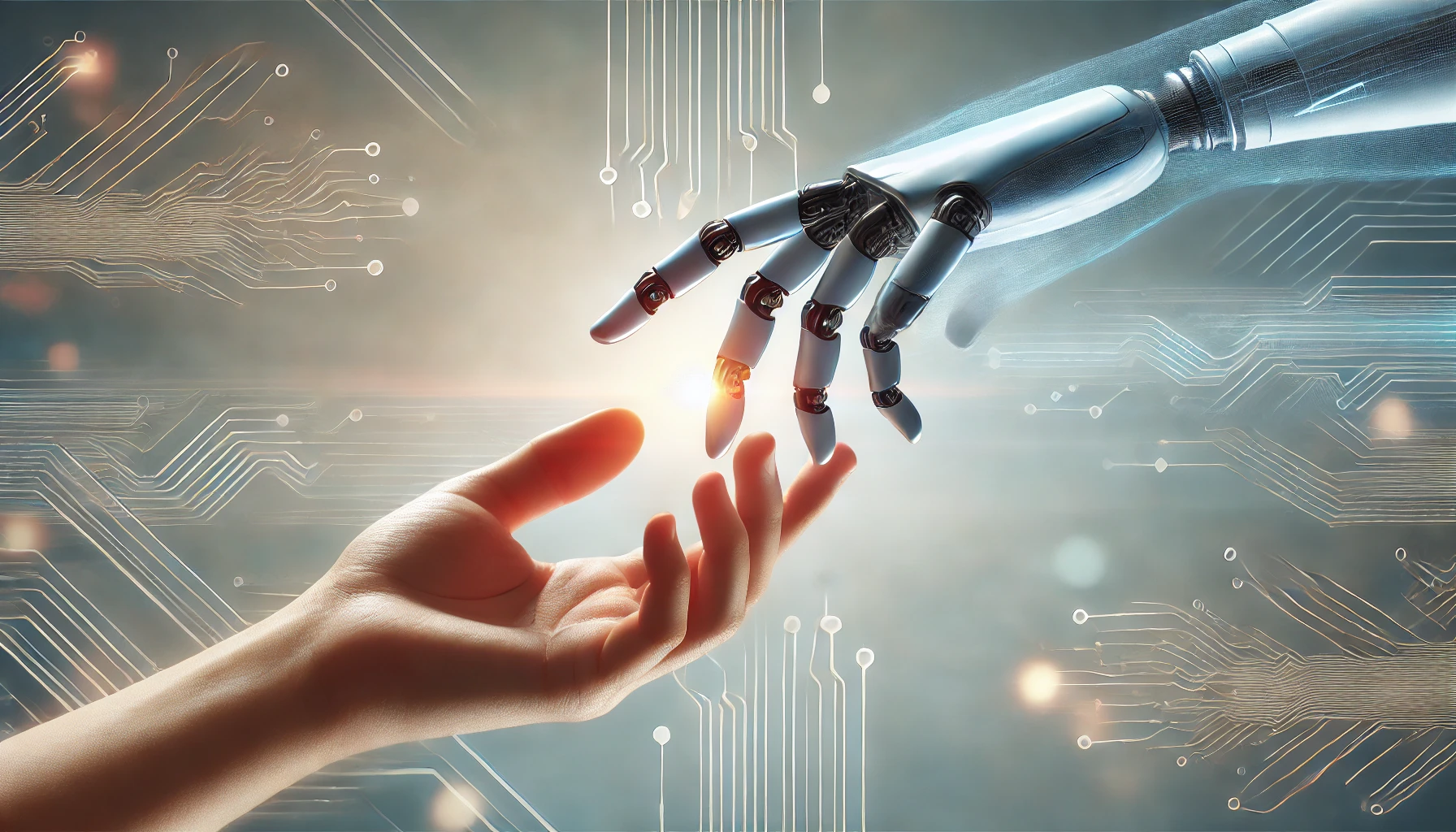
Top 5 best Techonology in the world
- Robotics
- Artificial Intelligence
- CyberSecurity
- Quantum Computing
- (IOT) Internet of things
Techonology of Robotics
Robotics technology encompasses the design, construction, operation, and use of robots, as well as computer systems for their control and information processing. Robotics combines elements of mechanical engineering, electrical engineering, computer science, and others to create systems that can perform tasks autonomously or semi-autonomously. Here’s a detailed breakdown of robotics technology.
Robotics technology involves the creation and application of robots—machines capable of performing tasks that are typically carried out by humans. These tasks can range from simple and repetitive actions to complex operations requiring sophisticated decision-making and adaptability.
Robotics technology is a multidisciplinary field that involves creating machines capable of performing a wide range of tasks autonomously or semi-autonomously. It integrates mechanical engineering, electronics, computer science, and artificial intelligence. With its diverse applications and ongoing advancements, robotics technology is transforming industries and everyday life.
The future of robotics technology includes:
- Advanced AI Integration: Enhancing robots with more sophisticated artificial intelligence for better decision-making and learning.
- Collaborative Robots (Cobots): Robots designed to work alongside humans safely and efficiently.
- Swarm Robotics: Utilizing multiple robots working together to accomplish tasks.
Techonology of Artificial Intelligence
Artificial Intelligence (AI) technology refers to the development of systems and machines that can perform tasks typically requiring human intelligence. This includes learning from experience, reasoning, problem-solving, understanding natural language, and perceiving the environment. Here’s a detailed exploration of AI technology, including its components, methods, applications, and challenges.
Artificial Intelligence is a branch of computer science focused on creating systems that can simulate human intelligence. AI systems are designed to analyze data, make decisions, and improve their performance over time through learning and adaptation.
Core Components of AI Technology
Machine Learning (ML)
Machine Learning is a subset of AI that involves training algorithms on data so they can make predictions or decisions without being explicitly programmed. Key types include:
- Supervised Learning: Algorithms are trained on labeled data. Examples include classification and regression tasks.
- Unsupervised Learning: Algorithms identify patterns and relationships in unlabeled data. Examples include clustering and association tasks.
- Reinforcement Learning: Algorithms learn to make decisions by receiving rewards or penalties based on their actions. This approach is used in robotics and game playing.
Neural Networks and Deep Learning
Neural Networks are algorithms inspired by the human brain’s structure and functioning. They consist of interconnected nodes (neurons) arranged in layers:
- Feedforward Neural Networks: Data moves in one direction from input to output.
- Convolutional Neural Networks (CNNs): Specialized for image recognition and processing.
- Recurrent Neural Networks (RNNs): Designed for sequential data and time-series analysis. LSTM (Long Short-Term Memory) networks are a type of RNN that handles long-term dependencies.

Techonology of CyberSecurity
Cybersecurity technology encompasses a range of tools, techniques, and practices designed to protect computer systems, networks, and data from cyber threats. As cyber threats continue to evolve, cybersecurity technology also advances to address new vulnerabilities and challenges. Here’s a detailed exploration of cybersecurity technology, including its components, methods, applications, and challenges
Cybersecurity technology refers to the tools and methods used to safeguard digital information, systems, and networks from unauthorized access, attacks, damage, or theft. The primary goal is to ensure the confidentiality, integrity, and availability of data and systems.
Core Components of Cybersecurity Technology
2.1 Firewalls
Firewalls act as barriers between trusted and untrusted networks. They filter incoming and outgoing traffic based on predefined security rules.
- Network Firewalls: Protect entire networks by examining packets of data and blocking or allowing traffic based on rules.
- Host-Based Firewalls: Installed on individual devices to monitor and control traffic specific to that device.
2.2 Antivirus and Anti-Malware Software
These programs detect, prevent, and remove malicious software such as viruses, worms, trojans, and ransomware.
- Signature-Based Detection: Identifies malware based on known signatures or patterns.
- Behavior-Based Detection: Monitors the behavior of programs and flags suspicious activity that may indicate malware.
2.3 Intrusion Detection Systems (IDS) and Intrusion Prevention Systems (IPS)
IDS and IPS technologies monitor network and system activity for signs of malicious behavior.
- Intrusion Detection Systems (IDS): Detect and alert on suspicious activity.
- Intrusion Prevention Systems (IPS): Take action to block or mitigate detected threats in real-time.
2.4 Encryption
Encryption converts data into a format that is unreadable without the correct decryption key, protecting data in transit and at rest.
- Symmetric Encryption: Uses a single key for both encryption and decryption (e.g., AES).
- Asymmetric Encryption: Uses a pair of keys, one for encryption and one for decryption (e.g., RSA).
2.5 Authentication and Access Control
Ensures that only authorized users can access systems and data.
- Multi-Factor Authentication (MFA): Requires multiple forms of verification, such as passwords, biometrics, or tokens.
- Access Control Lists (ACLs): Define permissions for users and systems to access specific resources.
2.6 Security Information and Event Management (SIEM)
SIEM systems aggregate and analyze security data from various sources to detect and respond to potential threats.
- Log Management: Collects and stores logs from systems and applications.
- Event Correlation: Analyzes logs to identify patterns indicative of security incidents.
2.7 Vulnerability Management
Identifies and mitigates vulnerabilities within systems and applications.
- Vulnerability Scanners: Automated tools that scan systems for known vulnerabilities.
- Patch Management: Regularly updates and patches software to fix security flaws.

Techonology of quantum Computing
Quantum computing is a revolutionary approach to computing that leverages the principles of quantum mechanics to perform calculations significantly faster than classical computers for certain types of problems. Here’s a detailed exploration of quantum computing, including its principles, technology, potential applications, and challenges.
Quantum computing is an advanced type of computing that uses quantum bits or qubits to process information. Unlike classical computers, which use binary bits (0s and 1s), quantum computers use qubits that can exist in multiple states simultaneously due to the principles of quantum mechanics. This allows quantum computers to solve complex problems more efficiently
Quantum Computing Technology
3.1 Quantum Gates
Quantum gates are operations that manipulate qubits through unitary transformations. They are the building blocks of quantum circuits.
- Pauli-X Gate: Flips the state of a qubit (analogous to a classical NOT gate).
- Hadamard Gate: Creates superposition by placing a qubit in a state that is an equal combination of |0⟩ and |1⟩.
- CNOT Gate: A two-qubit gate that performs conditional operations based on the state of a control qubit.
3.2 Quantum Circuits
Quantum circuits are sequences of quantum gates applied to qubits. They are designed to perform specific quantum algorithms and are analogous to classical logic circuits.
- Quantum Algorithms: Algorithms that use quantum gates and circuits to solve problems, such as Shor’s algorithm for integer factorization and Grover’s algorithm for database searching.
3.3 Quantum Hardware
Quantum hardware includes various physical implementations of qubits, each with its own advantages and challenges:
- Superconducting Qubits: Use superconducting circuits to create and manipulate qubits. Companies like IBM and Google are developing superconducting qubit systems.
- Trapped Ions: Utilize ions trapped in electromagnetic fields and manipulated with lasers. Examples include ionQ and Honeywell.
- Topological Qubits: Based on anyons and braiding operations, potentially offering greater error resistance. Microsoft is exploring this approach.
3.4 Quantum Error Correction
Quantum error correction is crucial for maintaining the accuracy of quantum computations. It involves encoding qubits in a way that allows for the detection and correction of errors.
- Quantum Error-Correcting Codes: Such as the Shor code and the Steane code, are designed to protect quantum information from decoherence and other errors.
Quantum computing represents a transformative approach to computing, utilizing qubits and principles of quantum mechanics to solve complex problems more efficiently than classical computers. Key principles include superposition, entanglement, and quantum interference. Technologies involve quantum gates, circuits, and various hardware implementations.

Techonology of IOT
The Internet of Things (IoT) technology involves connecting physical devices to the internet and to each other, enabling them to collect, exchange, and act on data. IoT encompasses a wide range of applications, from smart home devices to industrial automation. Here’s a detailed exploration of IoT technology, including its components, architecture, applications, and challenges.
The Internet of Things (IoT) refers to a network of interconnected devices that can communicate and interact with each other and the internet. These devices, often equipped with sensors and actuators, collect and exchange data to enable automation, monitoring, and improved decision-making.
Core Components of IoT Technology
2.1 Sensors and Actuators
Sensors collect data from the physical environment, while actuators perform actions based on the data.
- Sensors: Measure physical properties such as temperature, humidity, motion, light, and pressure. Examples include temperature sensors in smart thermostats and motion sensors in security systems.
- Actuators: Convert signals into physical actions, such as opening a valve or adjusting a thermostat. They respond to commands from IoT systems based on sensor data.
2.2 Connectivity
Connectivity refers to the communication technologies that enable IoT devices to exchange data.
- Wi-Fi: Common for home and office IoT devices due to its widespread availability and high data transfer rates.
- Bluetooth: Used for short-range communication between devices, such as in wearable devices and smart home gadgets.
- Zigbee and Z-Wave: Low-power, low-data-rate protocols suitable for home automation and sensor networks.
- Cellular Networks: 3G, 4G, and emerging 5G networks provide wide-area connectivity for IoT devices, especially for applications requiring mobility.
- LoRaWAN (Long Range Wide Area Network): Designed for long-range, low-power communication, ideal for rural and industrial IoT applications.
2.3 IoT Platforms
IoT platforms provide a framework for managing, analyzing, and integrating IoT data.
- Cloud-Based Platforms: Offer scalable infrastructure for data storage, processing, and analysis. Examples include AWS IoT, Microsoft Azure IoT, and Google Cloud IoT.
- Edge Computing: Moves data processing closer to the source to reduce latency and improve real-time decision-making. Platforms like AWS Greengrass and Microsoft Azure IoT Edge support edge computing.































































































